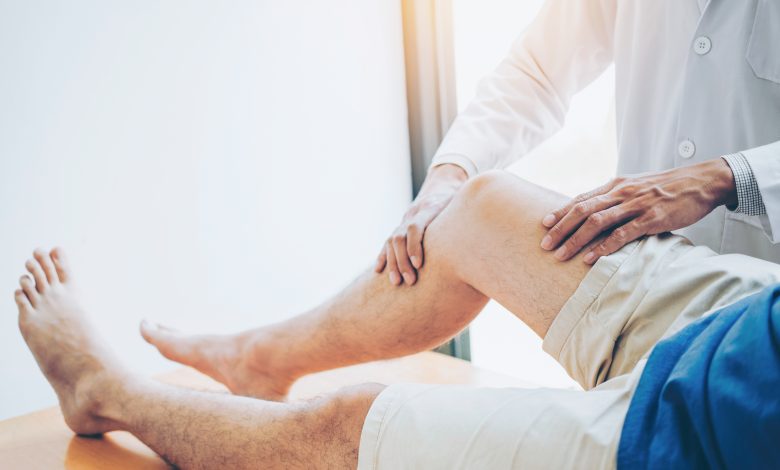Limb Lengthening Surgery in Turkey

Limb lengthening is a surgical procedure that balances the patient’s stride, corrects height proportions, and resolves cosmetic problems. The procedure of limb lengthening necessitates care, time, and accuracy. Through minor incisions in the damaged leg, the reconstructive surgeon conducts a surgical osteotomy (breaks) on the femur and/or tibia.
Leg lengthening surgery may be a good option for you, particularly if you are young and supple. It is serious surgery, and you must disclose any medical issues as part of the screening to determine whether you are a candidate for this procedure. Smoking is forbidden, and as you develop, you will need to follow a strict physiotherapy regimen with stretches.
Leg lengthening surgery is not for everyone, and you may not always be able to reach your desired height increase. The professionals, on the other hand, will discuss this with you in further detail and give recommendations based on their findings.

Treating Height Inequality Between Legs With Limb Lengthening Procedure
Leg lengthening is most commonly utilized to remedy a leg length difference. The purpose of leg lengthening surgery is to level the body in order to avoid back, hip, and knee issues that might occur while walking on legs of differing lengths. The majority of arm-length disparities do not have this kind of effect. Only when a shortened arm causes problems with daily tasks is lengthening explored.
Specialists can now perform surgery to accurately equalize your leg length and restore your equilibrium. Professionals can use modern procedures to osteotomies the relevant bone, generally the femur, and then extend it to help you balance.
Using an external remote control, you will be able to manage the distraction and develop the bone at a pace of 1mm every day. This allows for a very fine adjustment, and the leg lengthening may be halted once the legs are of equal length.
How Does The Leg Lengthening Work?
There are several devices that may be used to generate a gap in the bone. The first is a frame that the patient wears for several months on the outside of their leg or arm. A family member or the patient stretches the frame — and the bone — a modest amount at regular intervals after the first operation to encourage bone development.
An extendable rod is now another option that many patients choose. The rod is put into the bone once it has been cut. A magnetic controller on the exterior of the limb lengthens the rod. The internal device, as opposed to the frames, causes less harm to the skin and muscles around the bone and minimizes the chance of infection.
Limb lengthening is accomplished by utilizing the body’s natural ability to regenerate new bone, as well as the surrounding soft tissues, ligaments, vessels, and nerves. The procedure starts with an osteotomy, in which the orthopedic surgeon slices the bone that has to be extended. The limb is subsequently stabilized using one of various external and/or internal fixation devices or frames.
What To Expect From Limb Lengthening Surgery?
The specialists will take conventional X-rays of both of your legs, as well as a standing scanogram, which is an X-ray that captures a picture from your hip bones down to your feet, during your first appointment. Your surgeon will go over the surgical strategy, the ideal height, and what to expect during this visit. During this session, the surgeon and you will discuss a surgery date.
It is advised that you eat a healthy food and keep a healthy weight (BMI less than 30). Prior to surgery, there are no specific leg strengthening exercises that you must undertake in physical therapy. Because nicotine has a negative influence on wound and bone healing, the surgeon will not conduct the procedure on anyone who is currently smoking or using nicotine products. When you use nicotine products during your limb lengthening procedure, it might slow down the healing process and cause complications. During your appointment, your surgeon will conduct a thorough medical history to rule out any comorbidities that might prevent you from having surgery, such as osteoarthritis, osteoporosis, diabetes, obesity, or any metabolic bone disease.
Your surgeon may prescribe preoperative medical testing and an electrocardiogram based on your prior medical history. Those might be done the same day if necessary at the clinic.
The process itself takes around 5 hours, including the time it takes to prepare for surgery with anesthesia and the time it takes to recuperate in the Post-Anesthesia Care Unit. After the surgery, you should anticipate spending two nights in the hospital. During your stay, you will be monitored to ensure that your pain is under control and that you are ambulating safely.
After surgery, you will be able to bear weight on both legs immediately, although you may need crutches or a walker for support. The extending device that will be utilized can support up to 250 pounds of weight straight after surgery, letting you to bear weight right away. While you’re in the hospital, a physical therapist will work with you to help you walk with these devices.
What Will the Recovery Be Like?
You will work with physical therapy every day after you are discharged from the hospital to work on leg strengthening exercises. Your staples will be removed, and you will begin using the external hand-held magnetic device to begin the lengthening process two weeks after your surgery. New X-rays will be taken to ensure everything is healing well, and you will begin using the external hand-held magnetic device to begin the lengthening process.
You will use your hand-held magnetic gadget twice a day during the lengthening procedure. Your internal rod will be turned 0.25mm each time, for a total of 0.5mm every day. The lengthening procedure will take a certain amount of time depending on the desired height. The lengthening device does not need to be removed once you have attained your target height unless it gets uncomfortable.
After surgery, you will be put on a medicine You will stop taking this medication after two weeks and begin taking aspirin orally every day for vein clot prevention.
For the first six weeks, your surgeon will take X-rays and see you in clinic every two weeks, then three months and six months. If you do not live near the clinic, you will be requested to have X-rays at a different site and have the photos and findings forwarded to your surgeon’s office.
Throughout the lengthening process, you will continue to work with Physical Therapy on gait training and leg strengthening. During the lengthening phase, running or high-impact activities are not suggested; however, your surgeon will encourage you to engage in low-impact exercises like as walking or riding a stationary bike.
Eligibility for Limb Lengthening Surgery
The first step in treating limb length disparity is to consult with an orthopaedic physician who is familiar with the treatment. Patients may be astonished to hear that what they believed was a leg length disparity, for example, is actually scoliosis or a hip deformity. Alternatively, people might have a misunderstanding regarding the length of their limb length disparity. The Limb Lengthening Service at Clinic Excellent obtains a particular sequence of X-rays to carefully analyze and confirm each diagnosis.
When there is a real asymmetry, even if it is not the consequence of trauma, it can cause discomfort in the back, knees, and ankles. Osteoarthritis can occur as a result of a malunion, or a fracture that has not healed properly. In other circumstances, a patient may have lived with a limb length disparity for many years without having any issues until they reach middle age and develop troubling symptoms.
Both children and adults, including those in their 20s, 30s, 40s, 50s, and even 60s, can benefit from limb lengthening surgery. The orthopaedic surgeon takes extra care not to injure the growth plate in pediatric patients, and both normal development and distraction osteogenesis proceed throughout recuperation.
Both children and adults, including those in their 20s, 30s, 40s, 50s, and even 60s, can benefit from limb lengthening surgery. The orthopedic surgeon takes extra care not to injure the growth plate in pediatric patients, and both normal development and distraction osteogenesis proceed throughout recuperation.




